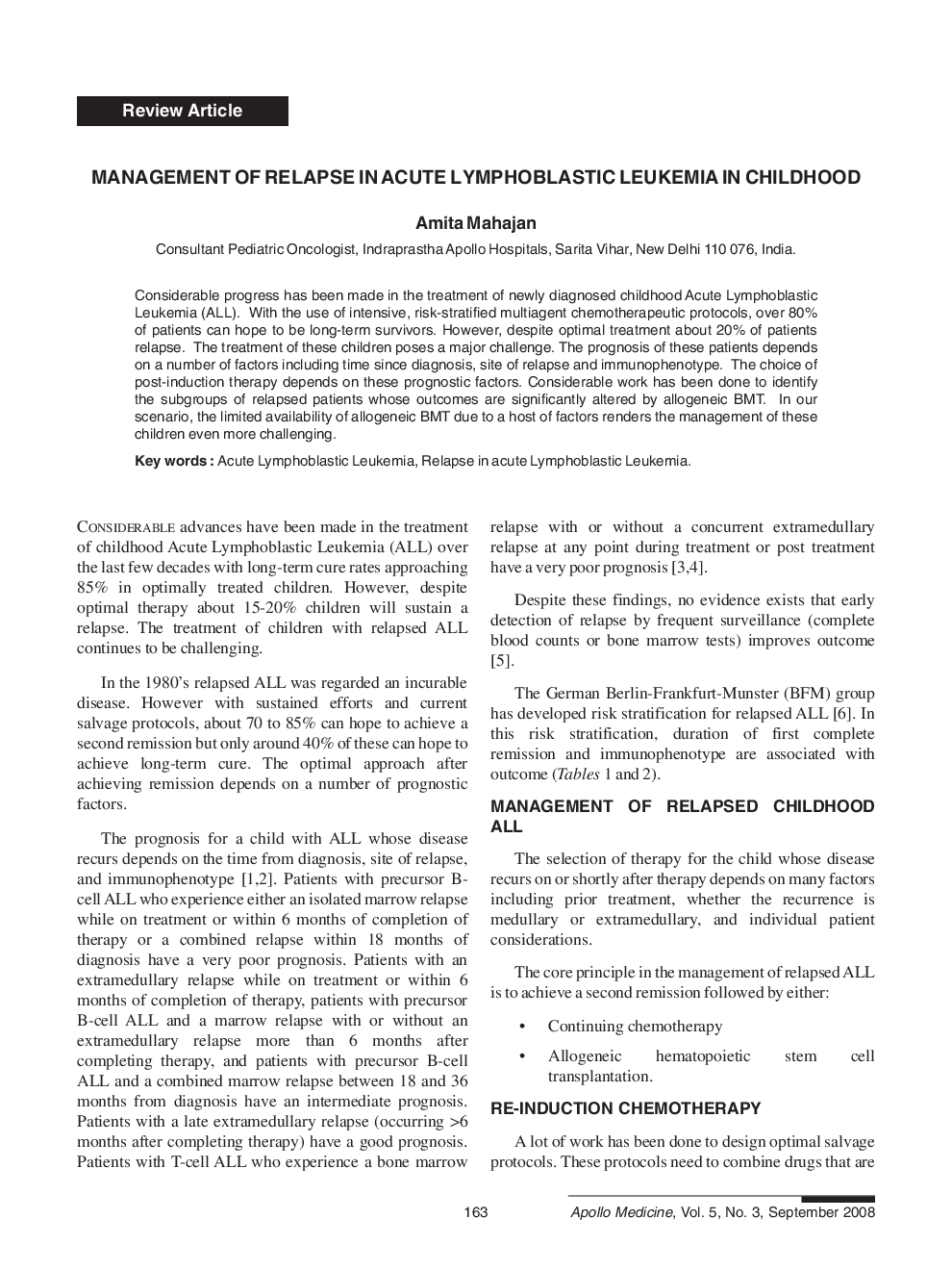| Article ID | Journal | Published Year | Pages | File Type |
|---|---|---|---|---|
| 3235268 | Apollo Medicine | 2008 | 5 Pages |
Considerable progress has been made in the treatment of newly diagnosed childhood Acute Lymphoblastic Leukemia (ALL). With the use of intensive, risk-stratified multiagent chemotherapeutic protocols, over 80% of patients can hope to be long-term survivors. However, despite optimal treatment about 20% of patients relapse. The treatment of these children poses a major challenge. The prognosis of these patients depends on a number of factors including time since diagnosis, site of relapse and immunophenotype. The choice of post-induction therapy depends on these prognostic factors. Considerable work has been done to identify the subgroups of relapsed patients whose outcomes are significantly altered by allogeneic BMT. In our scenario, the limited availability of allogeneic BMT due to a host of factors renders the management of these children even more challenging
